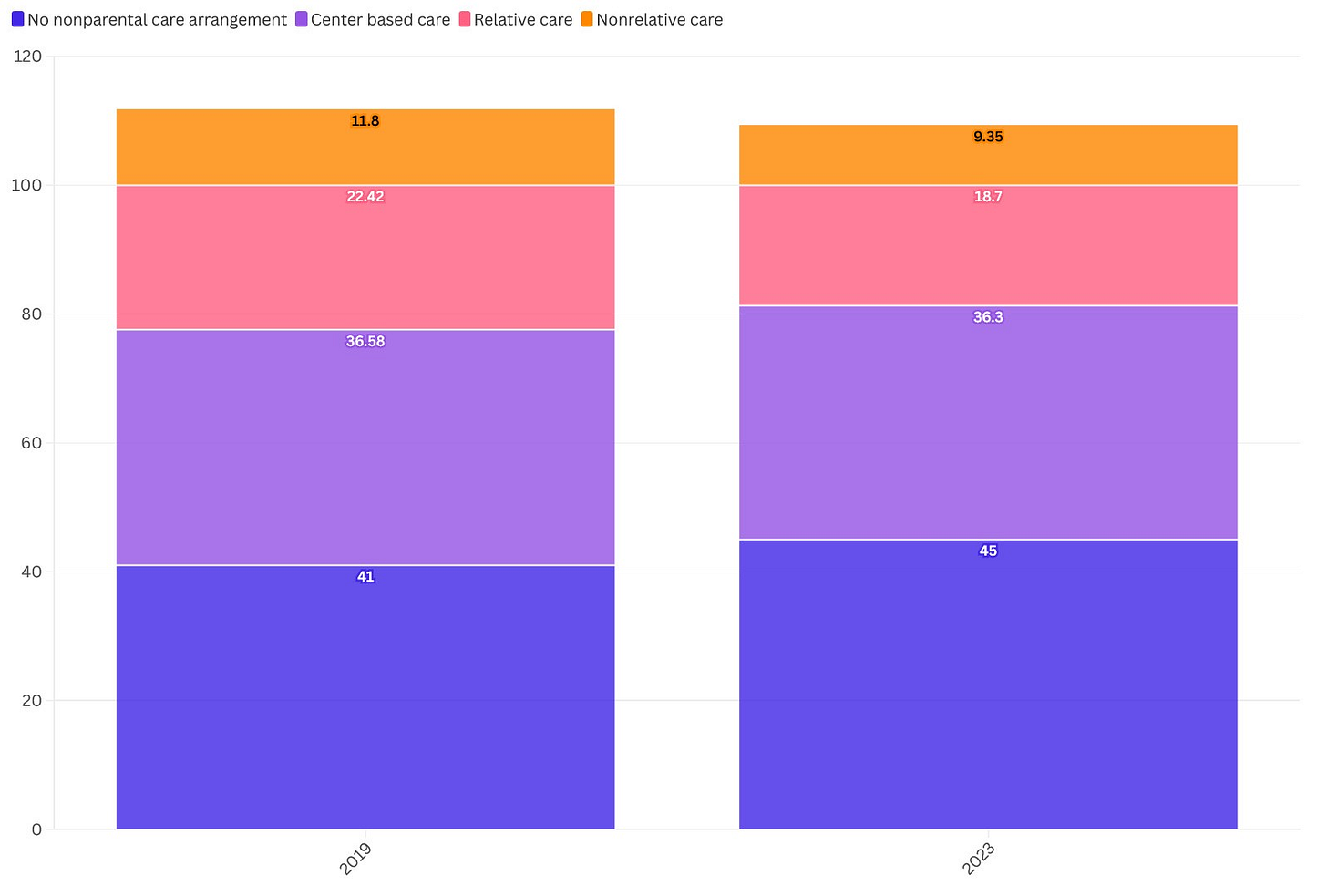Out-of-pocket costs and more ECPP 2023 numbers
Something is weird about the center-based out of pocket costs
According to the NHES:ECPP 2023 summary tables, parents who pay for center-based care are paying an average of $21.32/hour per child, or $852.80 for 40 hours a week, more than double 2019.
That is strangely high. The Department of Labor hasn’t released childcare prices for after 2018, but Child Care Aware of America has 2022 numbers based on a survey of state agencies found that the average cost of center based care was $11,866 per year, or $228 per week, assuming 52 weeks of care. Even if you assumed fee-charging childcare centers took a total of 12 weeks off while charging $11,866, that would still only be $297 per week, or less than half the NHES:ECPP 2023 numbers. For an $11,866 annual cost to shake out to $21.32/hour, a child would have to be getting only 10 hours of center-based care per week, which seems unlikely in a population where many families have all available parents in the workforce.
Maybe childcare prices stayed relatively stable between 2019 and 2022 and then more than doubled between 2022 and 2023. Maybe Child Care Aware of America’s data from the state agencies was really skewed. Maybe the ECPP sample was really off. But to be honest, I don’t think the average family using daycare/preschool is paying $21.32/hour, about $3 more than women’s median hourly earnings, meanwhile maternal labor force participation is higher than it was in 2019, even as other research indicates that mothers’ labor force participation is fairly sensitive to child care prices. Maybe the third of families that are using center-based care are made up of either free/no fee public options or parents whose hourly earnings are so much higher than $21.32 that it’s worth it for them to pay that much.
So with that done, one thing I found intriguing was how the care arrangements of various groups changed. Nonparental care dropped generally, but did it drop evenly in relative care, nonrelative care, and center-based care? It appears not. In the whole sample, the share of children in center-based care went from 36.6% in 2019 to 36.3% in 2023, even as the share of children only in parental care went from 41% to 45%. It was relative and non-relative care arrangements that dropped, though based on the current available data I can’t say how much of the non-relative care change was in home daycares versus friend and neighbor care versus nannies.
You can click here if you want to look at various subgroups. While the share of children in center-based care stayed relatively constant for some groups (parents with college degrees, infants), it dropped quite a bit for children living in poverty from 32% to 21% of those children participating in center-based care. Given that these children are theoretically supposed to have access to funded programs like Early Head Start, Head Start, and various public pre-kindergarten programs, this is a big shift. I’m not sure how the availability of Early Head Start and Head Start spaces changed during the pandemic.
Another fun fact: parents generally said their infant’s care covered work hours “well” or “very well” at a higher rate than parents of three-to-five year olds (87% to 75%).




